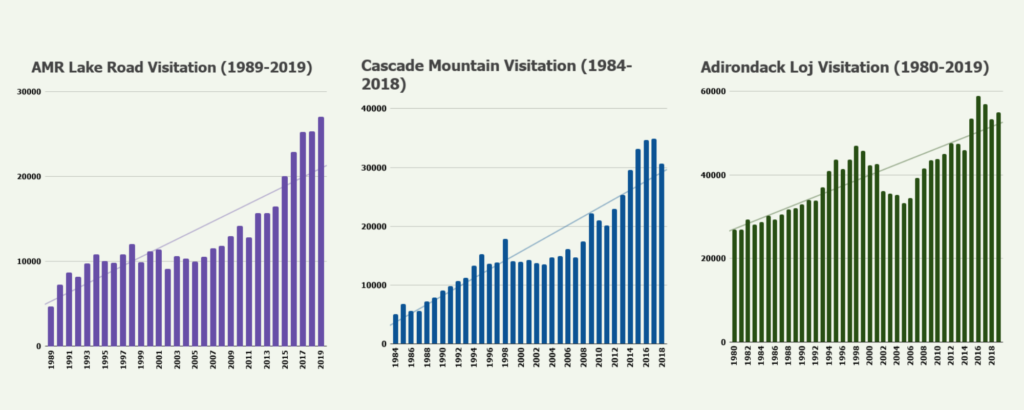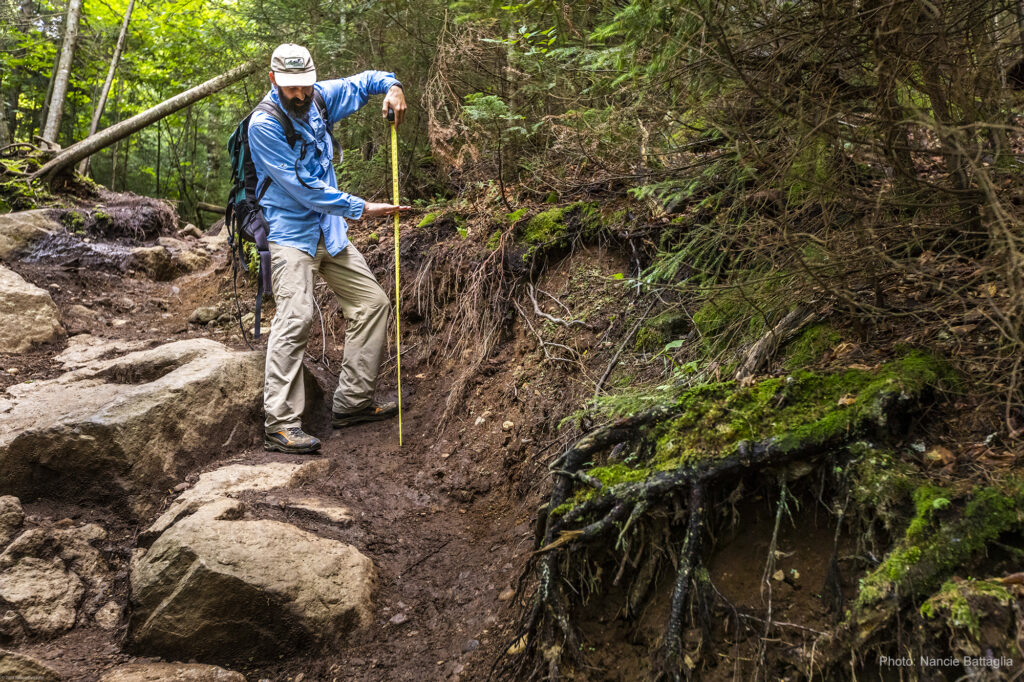An Overview of Overuse
High use is a major issue facing the Adirondacks today. A dramatic increase in visitors annually has a negative impact on the very forever wild land that visitors are so eager to see. As expected, trails play a significant role in this overuse.

Overuse in the High Peaks region is particularly problematic. In 2016, there were 600 people a year summiting all 46 peaks above 4,000 ft, as opposed to 126 in 1975 (Lynch, 2016). More recently, in 2020, 860 people completed the 46 Peaks challenge (Adirondack 46-ers, 2021).
High use can cause crowding and conflict, which decreases the quality of the visitor’s recreational experience. More importantly, high use has devastating effects on the land. Crowding causes ecological damage, compaction and deposition of soil, altered drainage and erosion patterns, trampling of high alpine flora, and spread of invasive species. Notably, low levels of trampling can be just as impactful as high levels, so even if the amount of hikers in the high peaks can be reduced there may not be a significant ecological impact. The High Peaks Wilderness Complex in the Northeastern Adirondack Park contains northern hardwoods, high-elevation boreal forest, alpine tundra, habitat for endangered species, and is the headwater for the Hudson River (Schneller, 2020). This land is highly vulnerable and valuable thus the negative impacts associated with an ever-increasing flow of hikers trampling this ecosystem must be addressed.

Historically Poorly Designed Trails
“If you’re in the trail business in the Adirondacks you’ve inherited about 125 years of poor design and maintenance, and it might take another 125 years to fix it all”
-Tony Goodwin, head of the Adirondack Trail Improvement Society (Lynch, 2016)
Over a century ago, when the first trails in the Adirondacks were being cut there was no concept of trail design as it exists today. Guides and wilderness explorers wanted to find the most direct path to reach the summit. This kind of steep trail design is the perfect path for snowmelt and precipitation, making these kinds of trails highly susceptible to erosion. In addition, older trails were not designed to accommodate the large quantities of hikers that visit the Adirondacks today. This need for trail repair and management adds many more pieces to the puzzle of how to address overuse in the Adirondacks.
Image Sources: